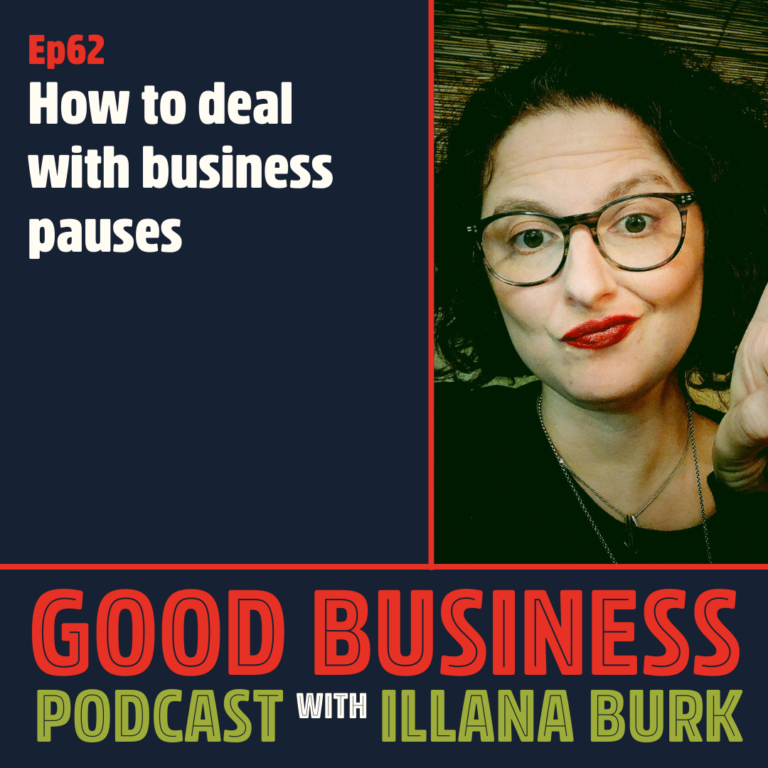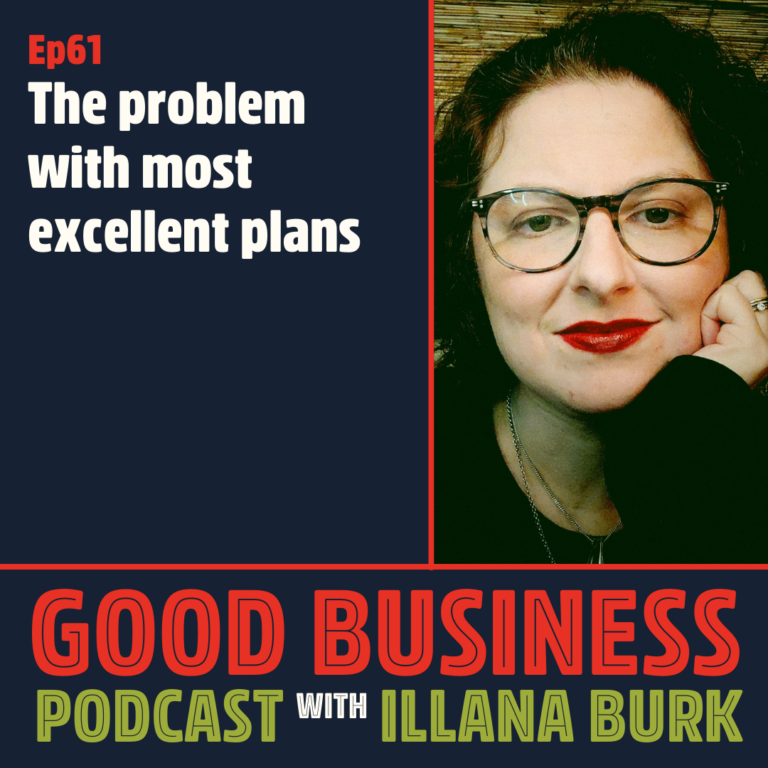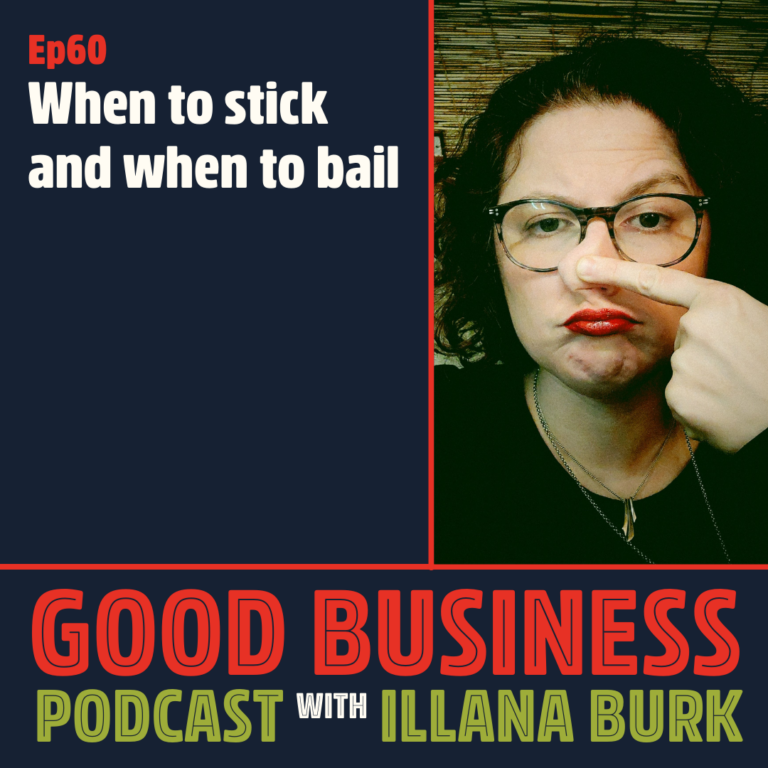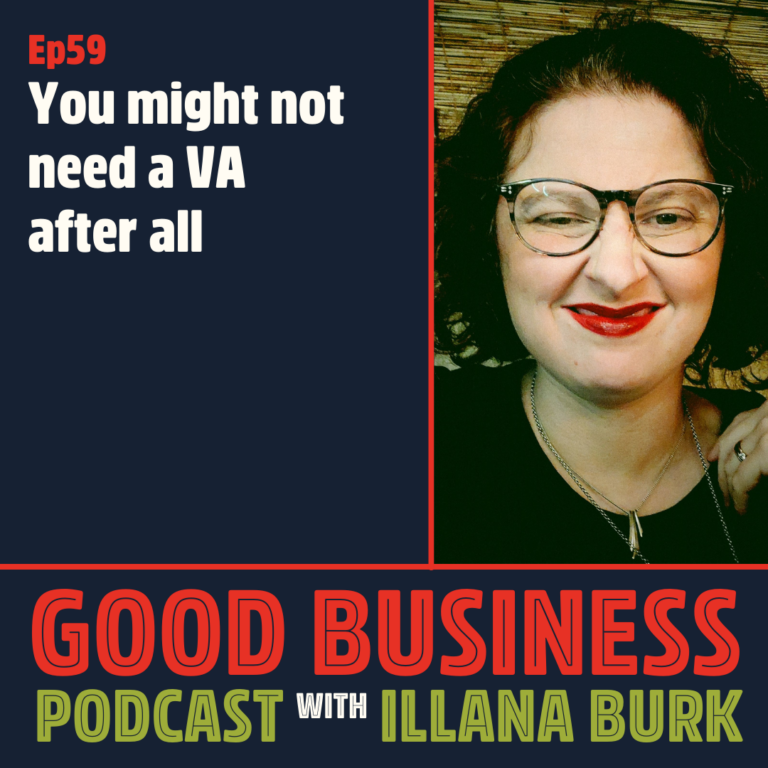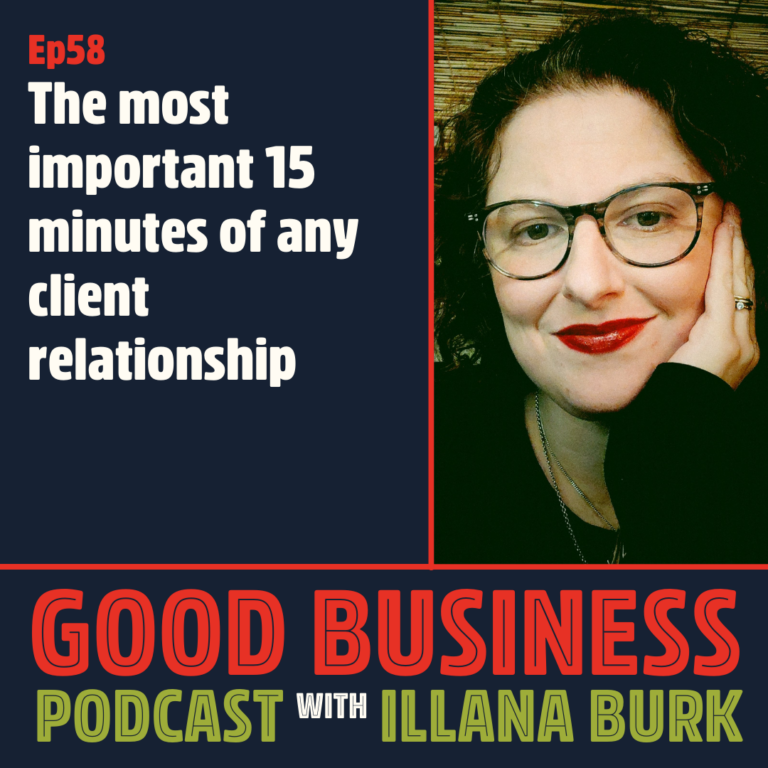Does your work make the world a better place? When you think about creating an offer, do you think about the impact of what you’re doing? And how do you think about it?
In this episode, I talk about how to consider impact when it’s not always straightforward. Let’s dive into how to think about sustainability even as a solopreneur or small business and what place the triple bottom line has in your offer design.
Episode Transcript:
Welcome back. Today is the final step in our multi-step offer design series. And with our final step, I want to talk about one very important thing. Does your work make the world a better place?
When you think about creating an offer, like in a really specific offer design way, do you think about the impact of what you’re doing? And how do you think about it?
When we think about like online business owners and solopreneurs, this can be really challenging. Because it’s not always so straightforward for the web designer, for the jewelry designer, for the coach. It’s not always a clear cut picture of like, how you think about impact and whether or not your offer has any level of feeding back into your community or your environment.
Now there’s industries where this is really straightforward. You know, an organic farmer can go look, I’m creating food and I’m doing good things for the earth. And you know, a diversity and inclusion consultant can say, look, I’m creating a more equitable workplace. But when you’re a life coach say, or you make earrings, how do you express your impact when you create an offer?
Is that important to you? Does your work make the world a better place? Does your offer make the world a better place?
So as the simple primer to kind of guide your thinking in this, I want to use a concept, and I’m going to just illuminate this concept for you, from the sustainability world.
Now, my background is in sustainable enterprise. That’s what my MBA is in. It’s what my degree is in. But it’s not something that I use in the traditional way that it was intended, which is to create a more environmentally sound business world in a really direct way. But I learned all of these incredible tactics. And one of the backbones of sustainable business is, when we think about green business, is the idea of the triple bottom line: people, planet, profit. Instead of just a single bottom line of thinking about financial sustainability, we think about community sustainability, human sustainability, and environmental sustainability.
Basically you can’t have a thriving business without these three things being considered like three legs of a stool or a table.
So when you’re designing your offers, the simple act of considering those three things is a step in the right direction. If you’re considering that, you’re already doing more than most. If you can look at ways in which your work creates a more sustainable and thriving community for the people around you…
Now, the people around you could be your family members. They could be your clients. They could be the people who follow you on Instagram. They’re the humans in your orbit or in your orbit’s orbit, right? It’s the humans that you might touch through the leadership that you put out there through your offer, whether people buy it or not.
Then there’s the environmental part.
This can be a little stickier when you’re somebody who is sitting at your kitchen table on a laptop, right? How do you consider environmental sustainability? Your work may or may not. You know, if you’re that jewelry designer, maybe you’re using recycled metals instead of virgin metals. Maybe you’re going the extra mile to know the pedigrees of the stones that you use and know the working conditions of the people who mine them. And you make decisions accordingly. You charge accordingly and you make it part of your story.
The point though, is that if you fail to consider all three of those things, then no amount of diversity declarations on your website, no amount of, giving back 1%, no amount of donations when there’s a natural disaster, is going to make up for the fact that the rest of the time you could be doing real harm.
So how do you consider the people? How do you consider the environment in which you occupy? How do you consider your bottom line and whether or not it is a financially sustainable entity? And how do you consider those three things side-by-side all the time?
The simple answer is you ask yourself those questions and you make decisions based on the answers.
It means that let’s say you’re creating an offer that has a huge financial commitment on your part that might bump up against your spouse’s need to pick up your kids at school. That means that it’s unsustainable from a human standpoint, based on the people in your community. So you need to adapt accordingly when you create your offer.
It can be really that simple. It’s instead of asking for sacrifice all the time, because it’s quote unquote, “your work”, right. We have this idea in Western culture that your work somehow trumps basic consideration. If you’re making money, then you get to put aside things that might otherwise really matter to you or to the people around you.
This is a practice of not doing that. It’s a practice of going okay. If this is going to dramatically inconvenience somebody I care about, or it’s going to affect them in a negative way, or let’s say you want to be a YouTuber and your family doesn’t want to be famous, like it’s making choices about the thing that you’re doing based on the humans that matter to you.
And realizing that by asking them to sacrifice, you’re creating a short-term solution and thereby creating an unsustainable future for yourself. You can’t consistently ask for sacrifice and expect it to be a thriving offer. And if you want it to be a thriving offer, you have to consider these things up front.
So same thing with environmental sustainability around you. Let’s say you want to start a podcast and that’s the quote unquote offer that we’re creating. Right? I’m going to start a podcast. And in order to start that podcast, it requires that you buy a generator because you live rurally and it means that you have to run a gasoline generator outside and it means that you have to rent space and you have to pay for incredibly expensive hosting and you have to, uh, use tons and tons of energy or whatever, right? Whatever the circumstances are that might have, like there’s an extrapolation to it. That those of us who can just plug in our laptops kind of take for granted. What’s the consumption of your work? Sometimes it’s already very low and you don’t have to consider this very much. But at least spending five minutes thinking about it really doesn’t hurt either, does it? It’s just a matter of making it a practice to think about all three things.
Likewise, there’s the money end. If you create the most amazing offer in the world, that’s not financially sustainable or sustaining, meaning you’re not considering the inputs and outputs and the costs involved in the offer creation, you can definitely create an amazing offer that makes no money, which makes it inherently unsustainable. Which means you don’t get to make any impact. Even if you tick the other two boxes, if it’s not financially viable, you won’t be able to sustain it, which means you will not have a positive impact because you won’t be able to financially continue to offer it.
As you think about impact, if you want to make the world a better place, if that’s truly what you talk about in why you got into whatever business it is that you’re in, if you really do want to make the world a better place, it has to start at the offer level, not the business level. Because the offers are what you sell.
That’s the stuff that’s the bread and butter. That’s your actual business function. You can have all the good intentions and the beautifully written copy in the world. But if you’re not actually actively considering how your actions, behaviors, and offers are affecting these three areas simultaneously, you will consistently not have the impact that you want to have.
All right, everybody. That is our series on offer design. I look forward to coming back with all kinds of new topics and I will see you all soon. Have a great day.
More Episodes
How to ask for and take feedback | GB63
Navigating feedback can be daunting. In this episode, we dive into the skills of asking for and receiving feedback with intention and grace. Learn the art of crafting your asks to elicit constructive insights and how to...
How to deal with business pauses | GB62
In the fast-paced world of entrepreneurship, taking a break can often feel like a foreign concept. The constant pressure to grow, scale, and make a bigger impact can make prioritizing personal well-being and life outside of work...
The problem with most excellent plans | GB61
Ever plan an amazing business move but hit a roadblock? This episode tackles the "pothole" of poor planning for solopreneurs. Learn how to "right-size" your strategy based on your resources and set yourself up for sustainable...
When to stick and when to bail | GB60
Feeling stuck in a business project that’s not taking off? This episode’s for you! We explore the often-overlooked skill of quitting and guide you through 4 key questions to help you decide when to persevere or let go. Learn to identify your true motivations, navigate self-doubt, and make choices that align with your goals and well-being. Listen to discover when to stick and when to bail!
You might not need a VA after all | GB59
Overwhelmed business owner? Stop! Hiring a VA might not be the answer. Learn how to ID expert vs. VA tasks & hire the right person for the job (without becoming a “shitty boss”). Listen in and get bonus tips in the show notes!
The most important 15 minutes of any client relationship | GB58
In this episode of the Good Business Podcast, we dive into the critical 15 minutes that can make or break a client relationship. Want to know why these first few minutes are so crucial, what should be included, and how to adjust...
